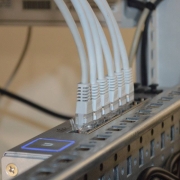So, what are desktops? How can they benefit your business? If you have numerous desktops, operating systems or are struggling with cyber-security threats, this is the technology for your organisation.
The key point is that cloud desktops provide businesses with scalability and flexibility. Cloud desktops allow a business to grow at its own pace; a business can add or take away software and applications without update problems or cyber-security threats.
It is first important to note that cloud desktops are also known as virtual desktops, hosted desktops or a Desktop as a Service. I know I struggled with the different terms in the beginning, but they all mean the same thing.
Cloud desktops main function is to virtualise everything when a user logs in to a PC. Once the PC is powered up, it presents the user’s whole computer as they need it on their preferred device.
Difference to Virtual Desktop infrastructure
The main difference between VDI and cloud desktops is that the former is served through on-premise servers. The infrastructure and deployment are managed by your internal IT team. Cloud desktops by contrast use third-party providers to host services in the cloud.
As a result, VDI upfront costs are higher as it requires investment in the servers and its storage which is needed. As it is on your site there is also continuous maintenance and upgrade costs. Cloud desktop at a third-party site means that no on-premise servers or expensive infrastructure is necessary.
You will not miss out on opportunities with cloud desktop either. There are add-ons including Microsoft Office licenses can be added or taken away as your organisation needs.
How will cloud desktop benefit my business specifically?
As there is little on-premise infrastructure with cloud desktop – like many cloud services which your organisation may already use – the costs can be via subscription. As a business, it is key to have predictable expenses, especially in the IT department where innovations and new investments are a regular occurrence. Costs will be easier to manage, having the knock-on effect of investing and trialling new technologies.
Do you have employees who work from home? Cloud desktops make remote working much simpler. A verification and log-in with no additional hardware is easy to use anywhere. This will also mean that your business is not reliant on good weather, no snow days, no transport strikes or third-party event because employees can work just as well from home.
In the same vein, if an employee loses their laptop, there is nothing for someone to steal. There will be no security breach.
This is also a further step to cloud file sharing. The whole system is delivered through the cloud rather than files. Therefore, there are collaboration benefits if your business thrives off team-work or group activities.
Have you experienced a backup disaster in the last 12 months? Having a centralised system makes disaster recovery much faster through remote back-up. This technology is designed for business use.
Some setbacks to be aware of
Problems may arise with cloud desktops where applications are resource-intensive. There may also be an additional downside if your building struggles with internet connection.
Although many cloud desktops could run offline to work where there is a patchy or no internet connection, this may not meet the needs of every business.
A concluding setback is that there are sometimes additional costs involved with cloud desktops; the considerable benefit in comparison to VDI. It is important as a business to find a provider who has a transparent pricing model to avoid hidden charges.
Are you convinced? Watch our video for a quick overview of how Serviceteam IT can help incorporate cloud desktop into your business.











Leave a Reply
Want to join the discussion?Feel free to contribute!